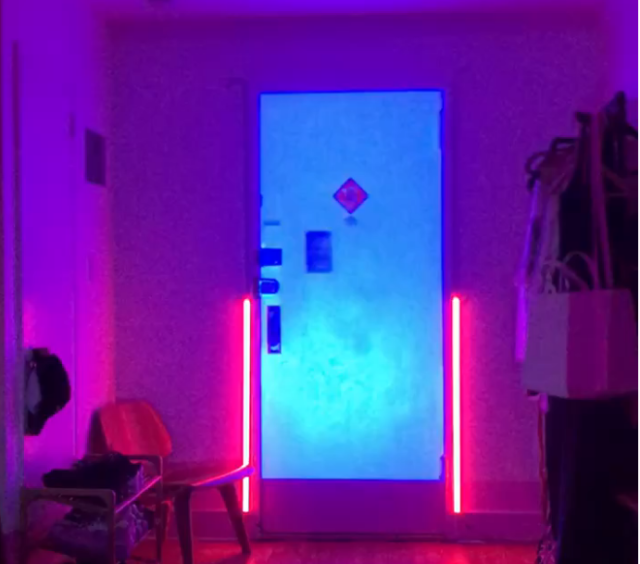I’m beginning to think deeper about the academic trend of ‘queering’ in which queer is made into a radical adjective that signals non-dualistic critique, untethered from from the context of gender and sexual dissidence. In thinking about rave lighting both inside and outside of intentionally set queer spaces, and my central thesis of a queer chrono-normative resistance and the queering of time that multiple nodes of sonic and visual percussion enact, I look to how Maggie Nelson explores this tension between the utility of queerness’ definitional capaciousness and its dis-appropriation in The Argonauts (29): “Eve Kosofsky Sedgwick wanted to make way for “queer” to hold all kinds of resistances and fracturings and mismatches that have little or nothing to do with sexual orientation. ‘Queer is a continuing moment, movement, motive—recurrent, eddying, troublant’ she wrote. ‘Keenly, it is relational, and strange.’ She wanted the term to be a perpetual excitement, a kind of placeholder […] willing to designate molten or shifting parts, a means of asserting while also giving the slip. That is what reclaimed terms do—they retain, they insist on retaining, a sense of the fugitive. At the same time, Sedgwick argued that ‘given the historical and contemporary force of the prohibitions against every same-sex sexual expression, for anyone to disavow those meanings, or to displace them from the term [queer]’s definitional center, would be to dematerialize any possibility of queerness itself.’”
Andrea Long Chu and Emmett Harsin Drager discuss this in their dialogue After Trans Studies published in Transgender Studies Quarterly Vol. 6 Iss. 1, where they discuss how the ‘trans-‘ prefix acts as an extension of how ‘queering’ has functioned within the academy: “As queer, as an analytic, has reached a point of analytic exhaustion, queer-studies scholars have had to entertain other vehicles for the romantic fantasy of criticism as a radical political act, which queer has sheltered for the past twenty years. The big secret about trans studies is that its working definition of trans is just “queer, again.” So this is what trans studies could offer: a safehouse for queer studies’ endangered “political optimism,” as Robyn Wiegman (2012) puts it. […] The basic idea is that transgender people, as a narrow identity group, can be a methodological stepping-stone for thinking more expansively about boundary crossings of all sorts: not just trans- gender, but also transnational, transracial, transspecies—you get the picture. And so the editors gift us with transing, queering’s unasked-for sequel.”
When I speak of a queering of straight time, I do not mean to say that cis-hetero subjects entering the queer rave will find themselves liberated from their hegemonic conceptions of time. Some subjects find great majoritarian satisfaction in leisurely touristing and vampirically feeding (and appropriating) queer energy, leaving the rave and continuing their 9-5 white collar wage-laboured job. However, I want to consider how the queer rave has the capability to augment the temporality of the subject’s desire that enter it. Perhaps it may act as the beginning of a catalyst of the tipping point for the dissatisfactory nature of straight time.
I’ve also had a technological breakthrough, whereby I’ve been able to effectively program my WS2812B strips through Resolume Arena, due to a Facetime correspondence with my ex-co-workers at the lighting collective I worked at. Below are some videos of my percussive experiments.
